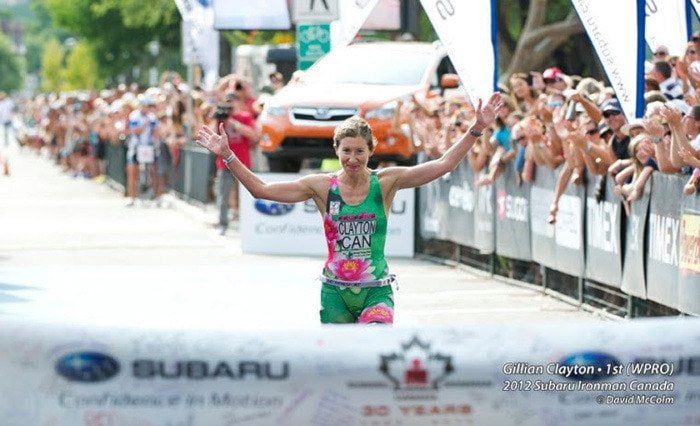Gillian Clayton
Special to the Record
Whether you’re looking to shave seconds off your personal best or take your athletic pursuits to another level, a well-rounded fitness program is essential to your success. Consider these three elements to create a balanced routine.
Core Stabilization Exercises
Meant to work your smaller muscle groups, these exercises work what's commonly known as core strength, to promote overall balance. These are critical for athletes. By strengthening stabilizer muscles, athletes are more likely to avoid and prevent injuries during training or competition.
Common overuse injuries among athletes include those involving the illiotibial band (also known as the IT band), knees, hamstrings and hip flexors. The most common reason for this is simply due to mostly focusing on larger muscle groups like quadriceps, hamstrings and calves. Here are some simple exercises you can incorporate into your workout to start strengthening these smaller muscles:
1. The Clam: Lie on your side with both knees bent. Keep your heels touching and hips still as you open your knees by contracting your glutes. It’s okay if your range of motion is limited – this is meant to be very slow, small and targeted movements. Use your hand on your hip to ensure your hips are staying still. Repeat on your other side to strengthen both sides. The key is to ensure you don't tip forward or back and to keep your hips stacked on top of each other so you use the proper muscles for this exercise.
2. Bent-knee hip extensions: Start on all fours on a mat. Your knees should be hip-width apart with your hands under your shoulders and your spine neutral. Maintain a strong, stable core as you bring your left foot upwards toward the ceiling, keeping the knee bent. Perform eight to 10 repetitions with the left leg before switching legs and performing the same number of reps on the right. Make sure you keep your stomach muscles turned 'on' to avoid overextending your lumbar spine while you raise your leg.
Strong hips and strong stabilizer muscles help support the kinetic chain of your feet, ankles and knees. By integrating these exercises into your workout routine, you’ll be less prone to injury, more stable and a more efficient athlete.
Weight Training
Muscular fitness is another key component of a balanced fitness program. Incorporating strength exercises that target your lower legs, quadriceps, hamstrings, glutes and core stabilizers will help develop the power required to propel yourself to beat your personal best.
The rule of thumb when starting out with weights is to always start light and slowly increase as needed.
1. Medicine ball squats: Stand with your feet shoulder width apart, toes pointed forward. Hold the medicine ball out in front of your body, slightly above your chest with arms straight. Do not lock your elbows. Lower your body, bending at the hips and keeping your weight on your heels. Activate your stomach muscles for stability through the squat and raise yourself up. Keep your back straight and make sure your knees don’t cross the plain of your toes.
2. Lunges with dumbbells: Stand with legs slightly apart and a dumbbell in each hand, arms at your sides. Take a big step forward, keeping your upper body and spine straight. Lunge until the front thigh is parallel to the floor and your back knee approaches the floor. Push off and return back to the starting position to complete one rep. Again, keep your stomach muscles 'on' through the whole lunge.
The big take home message here? If you spend time in the weight room, make it count. Being able to squat 200 pounds won’t help you in the long run as much as being able squat with good form and less weight. Going slowly with good form and doing 10 reps is always better than rushing through 20 reps with poor form. Build a strong core, work on your stabilizer muscles and you’ll be on your way to building a well-rounded workout.
Proper Diet and Recovery
It would be a mistake to underestimate proper diet and recovery, particularly after a strenuous, comprehensive workout. Eating well, hydration and proper recovery goes a long way to improve your ability to exercise and train. In fact, recovery is just as crucial as the workout itself, so don't skip this necessary step in your training.
Diet is a key component of any workout program. From your pre-workout meal to your post-workout recovery, it’s important to choose foods that contain lean protein, are low in fat and have a moderate amount of quality carbohydrates. This mix will energize your muscles and also prevent muscle loss. Don’t avoid carbohydrates, as they are your body’s primary source of fuel for activity and therefore very important to include in your pre- and post-workout fuel.
Examples of good pre-workout meals are: Roast chicken with vegetables and brown rice; Baked salmon over a bed of salad greens and walnuts. and Poached eggs on whole grain bread and a banana with peanut butter.
When it comes to recovery, it is essential to consume a mix of carbohydrate and a small amount of protein within 30 minutes to properly replenish the body’s glycogen stores. Glycogen is key for refueling tired muscles, especially if you plan to train again the next day.
An excellent option for recovery is chocolate milk which provides both carbs and protein to refuel and repair tired muscles post-workout. It’s also 90 per cent water and contains potassium and sodium to replace the electrolytes lost during perspiration.
Gillian Clayton, winner of the 2012 Ironman Canada, is a physiotherapist, new mom and professional triathlete who recently moved to Black Creek. Previously a varsity soccer player, she started running marathons in 2004. She taught herself to swim in order to complete her first half ironman in 2010. She has been racing professionally for ironman distance racing, and as an elite for Canada in international long-distance competitions since 2011 with a lot of success.
